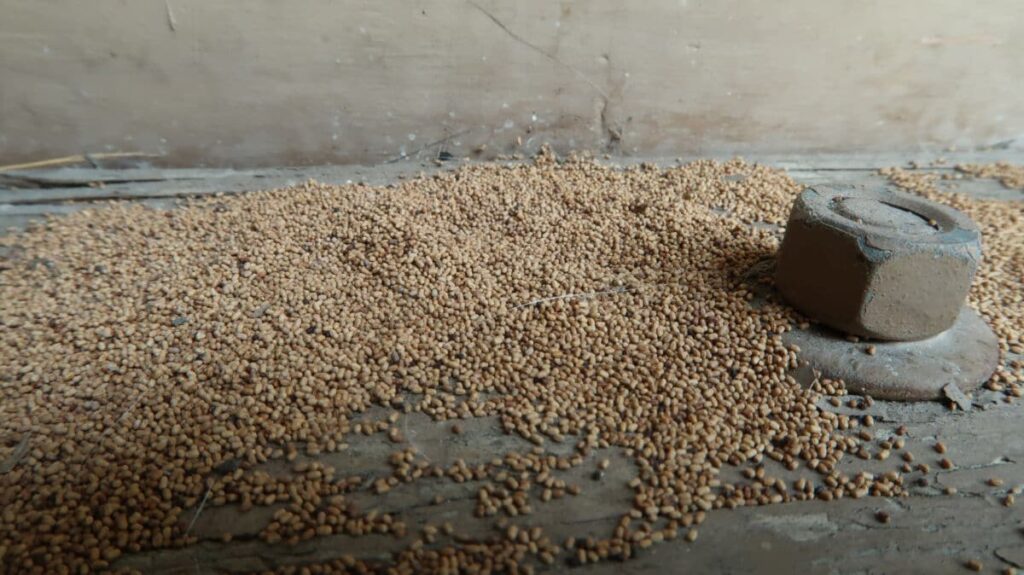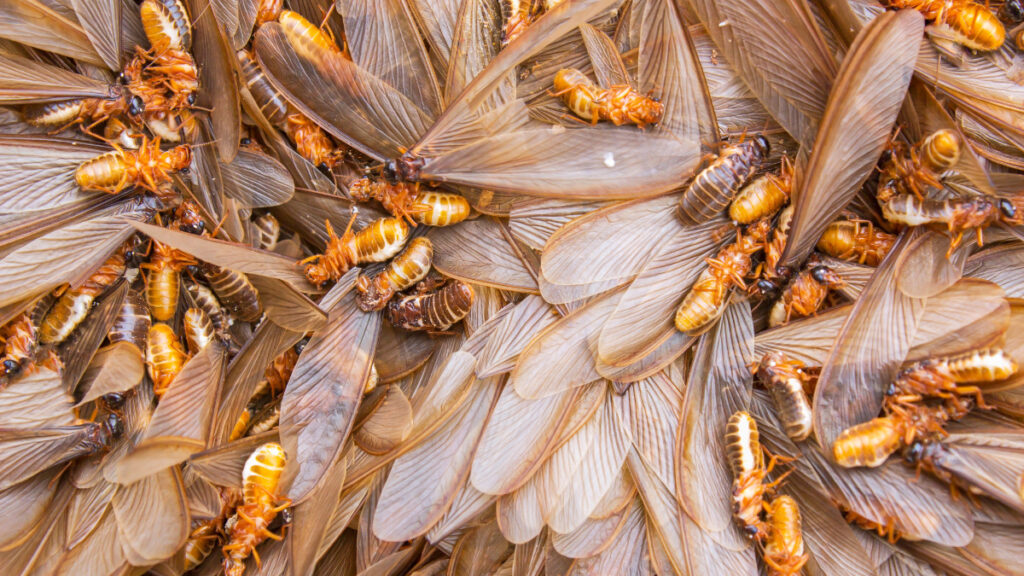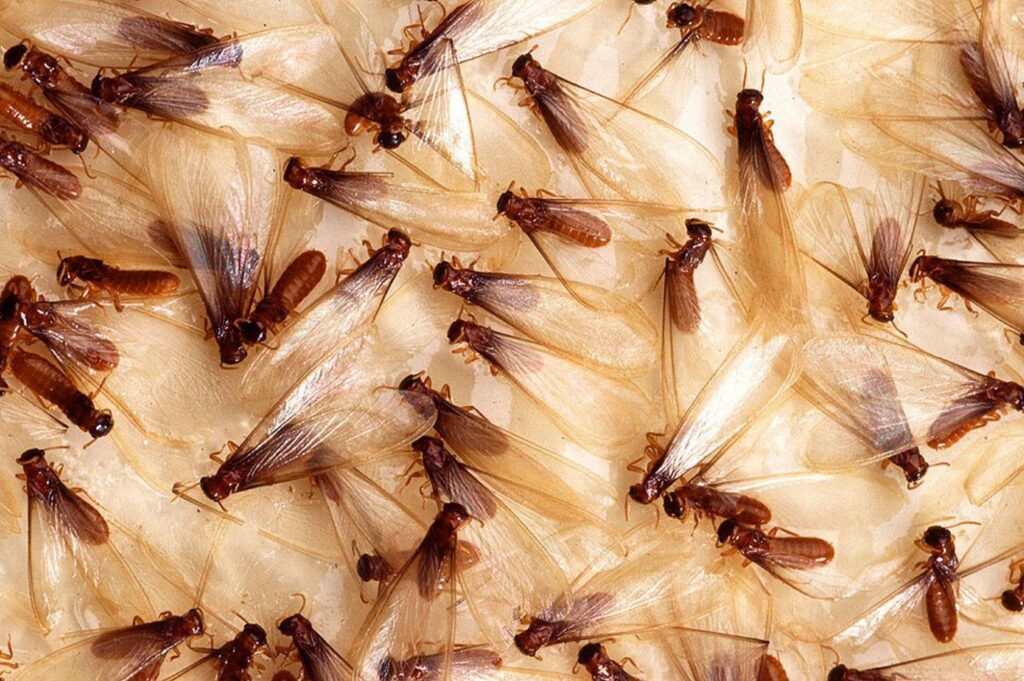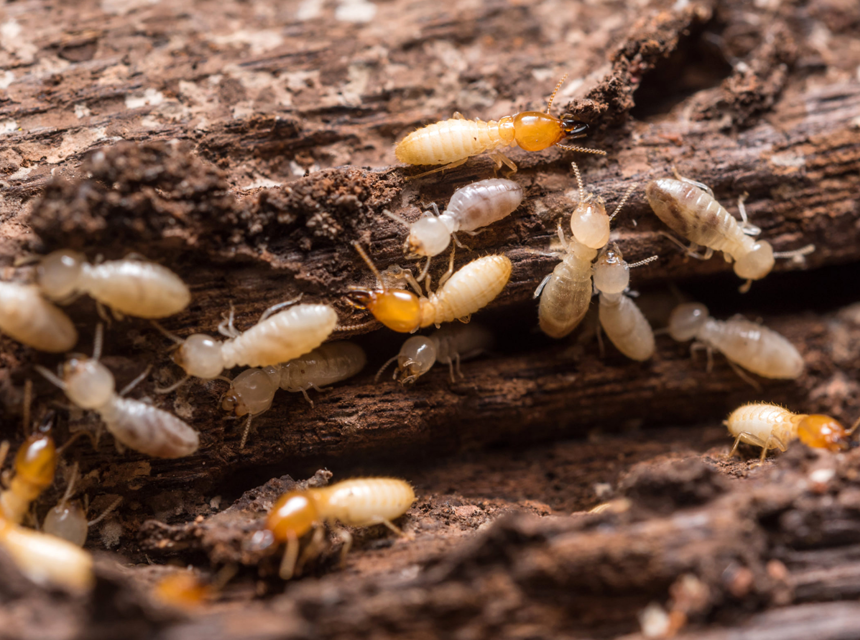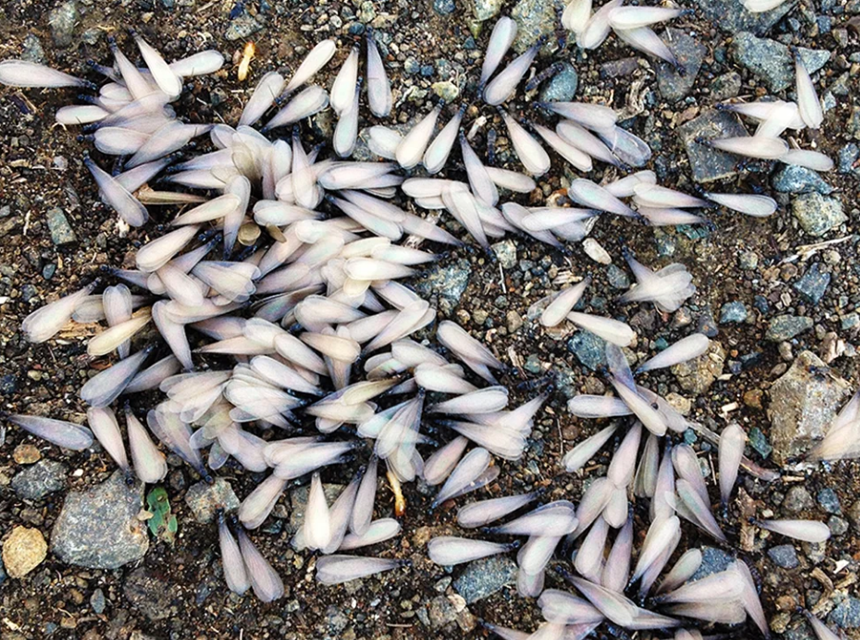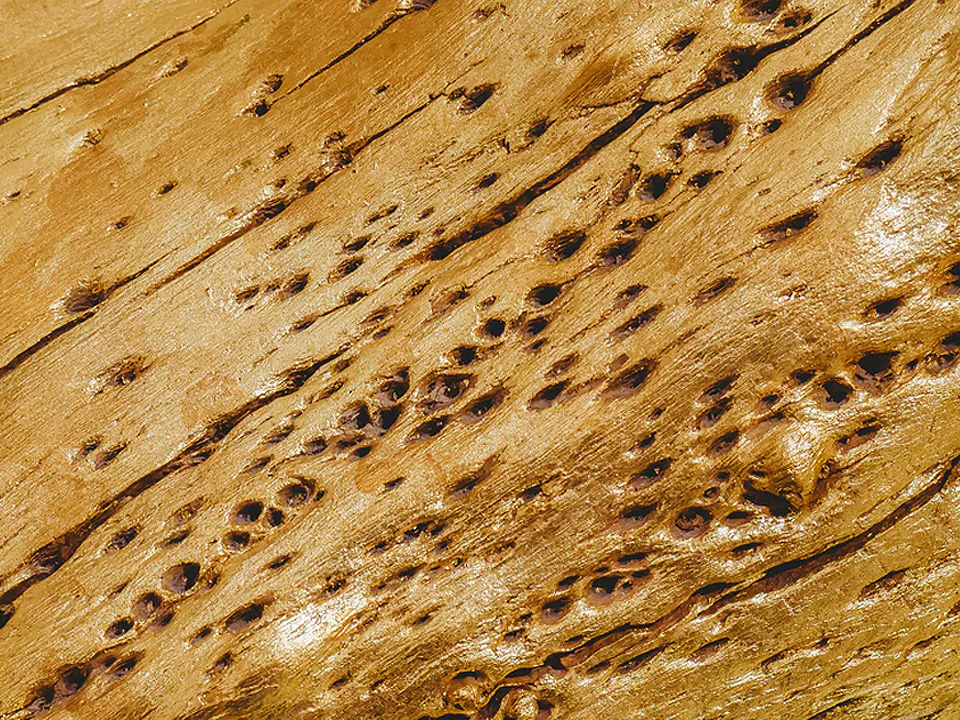

One of the most successful ways to get rid of termites is through the approach of termite tenting. This is particularly worthwhile when you have an extreme or severe case of infestation that you have to learn how to combat. Yes, there are exterminator approaches and even some DIY options that you can use.
Many of those work great but they are also most reliable for small infestations. If you have a home or a structure that is heavily infested, a termite treatment without tenting simply may not be enough to truly eradicate the pests and recover your property from this damaging infestation.
If you’re curious about the termite tenting process, check out more details throughout this article. We will share with you everything that you should know about termite treatment tenting and just how it works. You should also know the risks, costs, and required preparation for treatment. Read more below!
So, what exactly is this method of eradicating termites? The name is almost perfectly self-explanatory. The process works by covering the property in a specialized tent that is meant to hold a gas used to kill the termites.
This allows the gas to do the work and efficiently fumigate the termites within. The gas is contained in the property and it penetrates into surfaces throughout the home. It creeps into walls, attics, basements, woodwork, and any little crevice those buggers might be hiding in.
This is perhaps one of the most effective ways to truly get rid of every termite and egg. It also prevents infestation for some time afterward. The downside to the process is the termite house tenting cost that is involved. It can be really pricy and there is a lot of work and prep that will be required as well.
When you use products like the best roach killers to attack termites, their winning advantage is that they are more affordable and you rarely have to do a lot of prep or even leave your home for an extended timeframe.
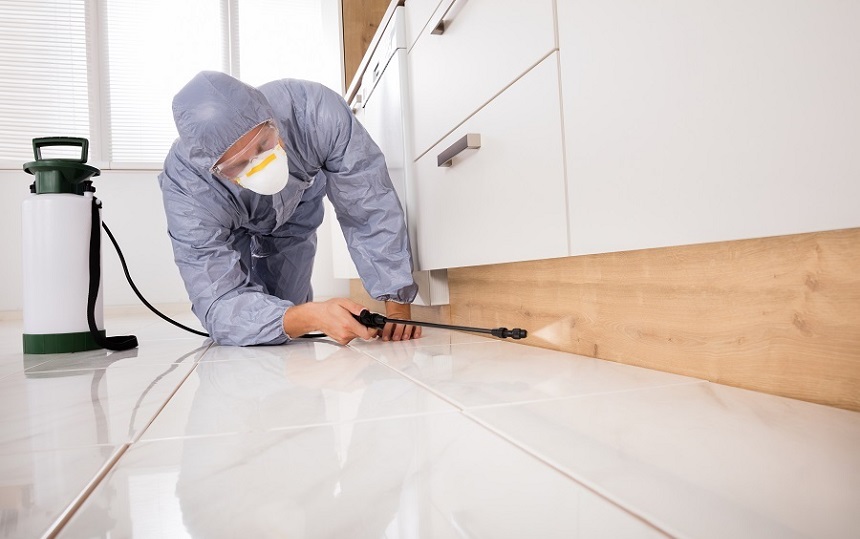
Fumigation is an alternative that some people use. You can fumigate through a professional exterminator but it’s also possible to use a DIY product like these detection and termination kits from Spectracide.
Both use a similar concept, which is to apply a chemical or a fume that will kill the termites. Fumigation can be part of tenting but technically these terms mean two different approaches so be sure you understand the difference.
That being said, a professional may tent your property for proper fumigation practices but it is possible to fumigate and treat a home without tenting as well. The effectiveness will likely depend on the severity of the infestation.
Heat treatment approaches are another alternative to full tenting. However, some professionals will tent for heat treatment purposes too as it makes it easier to accomplish.
Heat treatment requires applying or forcing intense heat into the home or a specified area to get rid of termites. The temperature has to reach somewhere between 120 and 140 degrees in order to actually kill the termites.
Again, tenting could be involved because it helps to hold in that heat, which needs to be exposed at those high temperatures for 20-40 minutes. Of course, if there is a localized area to be treated, this could be used rather than a tenting process.
Again, what is used or necessary will depend on the extent of termite infestation you are facing.

The preparation for termite tenting will take some very detailed preparation work. It’s not like your everyday best pet safe ant killers that you just spray or put down and then don’t worry about. You’re going to practically move out of your home, aside from some of the major furniture, particularly wooden furniture. Find more of those details below.
Tenting must be completed by a certified professional. The company will come in and set up a tent around the home. They will also set out warning signs so that people stay away and do not enter.
Once the tent is in place, they work through a process of spreading a toxic gas throughout your entire home or property. The goal is for this gas to creep through every nook, cranny, and crevice. The ability to get everywhere is what will truly eradicate the termite infestation you are facing.
Once the gas is emitted and the appropriate time has passed, they will start a ventilation process and tent removal process. This will help to clear the air to make it safe for the family to re-enter. In most cases, you should plan to be off the property for a minimum of 3 days total from start to finish.
You can return when the professionals have assessed the entire home and deemed it safe for re-entry. Some cleaning will be required for any possessions left in the home during fumigation.
The termite tenting process may take up to a week to complete and clear the home. Once it has been completed, the treatment is said to last approximately 5 years and sometimes much longer.
You will want to be proactive as there is no guarantee termites will return. The gassing process does eradicate all termites and eggs when done correctly but they can return eventually as well. When you compare this to using solutions like the best German roach killers to treat for termites, it lasts much longer as many of those last a year or less.
The same goes for this popular Spectracide termite killer. It’s highly effective at killing termites but the effectiveness typically lasts only somewhere around a year.
Termite tenting certainly presents some risks. If follow the recommended preparations and the professionals truly know what they are doing, these risks are often drastically reduced. The gas that is used throughout your home can be toxic.
This is why residents have to fully vacate the premises for the fumigation and for several days afterward while the home is aired out. Before you can be allowed back on the property, each room has to be tested and cleared by the exterminators.
There are certain specifications that have to be met to clear the home. These things go a long way to mitigate health risks. It is not safe for you to enter during or until the home is cleared.
As long as items were removed or bagged as required, they will be safe. There will also be some cleaning processes for you to follow up on re-entry, which will be a step to ensuring safety as well.
One of the many reasons termite tenting is a last resort for treatment is because it is very expensive to have done. The process is intense, requiring a lot of hard work on your part and a lot of money to get done.
However, if the extent of termite infestation is extreme, this may be the only way to save your home. That being said, most professionals will only recommend this if they feel other methods will not be effective.
Most termite treatments cost anywhere from $200-$800. This depends on the type of treatment and how extensive it is. However, tent treatments are substantially more expensive. You’re likely to pay anywhere from $1,200 to $3,000 for a termite tenting treatment. It’s possible it could even cost more.
The reason for the cost is because of the detailed procedure and the time that it takes to fumigate as well as tent, aerate, and clear the property.
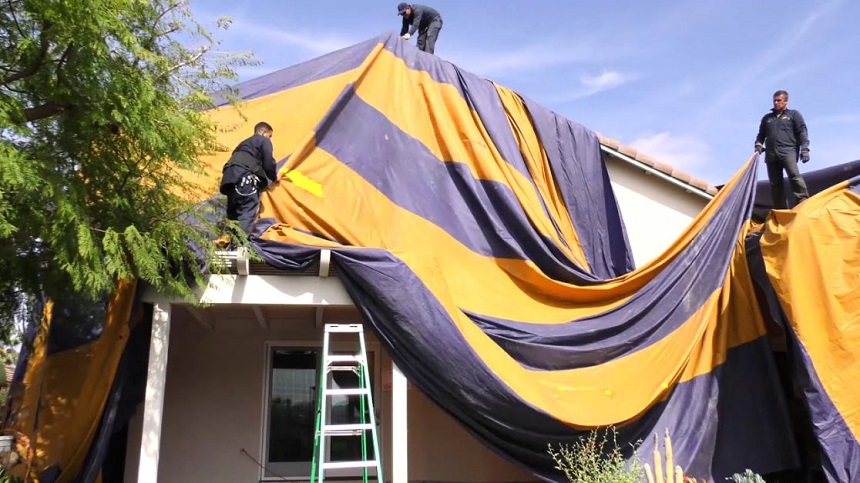
Clear the house of valuables, people, and pets! There can be no one or any animals inside the home when it comes time to treat it.
Start by clearing the home of food, valuables, and any type of open container or product. This includes anything you will wear, ingest, or apply to your body. Pack it up and move it out of the home. Some companies have specialized packing materials that you can use and leave in the home.
Plants are living things and they will die if exposed to the gases. You will need to move them out, along with just about everything else.
Unplug anything that uses electricity. This counts for appliances, TVs, and anything else that you have plugged into various outlets throughout your home.
If you have any furniture that is wrapped in plastic in any way, it needs to be unwrapped. The gas cannot clear these areas if they are wrapped up.
You’re going to open all your doors throughout the home to allow the gas to spread everywhere. In addition, plan to open drawers and cabinets throughout the home for the same reasons.
Do not attempt to enter the home until it has been cleared and deemed safe to enter. Then, follow these steps for the home.
Typically, the professionals will air the home before they clear it for you. However, you will likely still want to air it out even after you are able to return. Open windows and doors for a while to continue airing.
Everything should be cleaned before use. Furniture and any surfaces you touch will need to be cleaned well. In addition, any clothing or bedding left in the home needs to be washed. Wipe down all surfaces. Don’t forget to also wash any dishes and silverware left in the home.
The process for termite tenting is heavily involved. It’s costly and it requires a lot of work before and after the tenting occurs. In most cases, this will be used as a last resort when the extent of infestation cannot be handled in other ways.
Know your options and be sure to understand what the process entails. Work with a professional to determine the best course of action and go from there.
